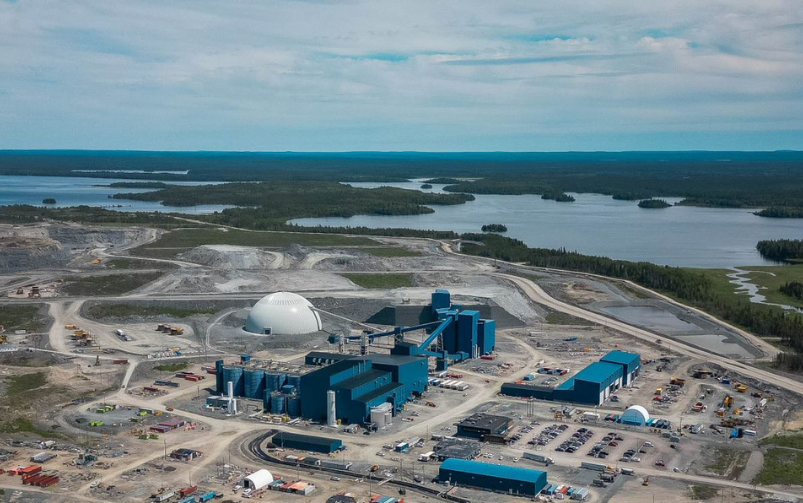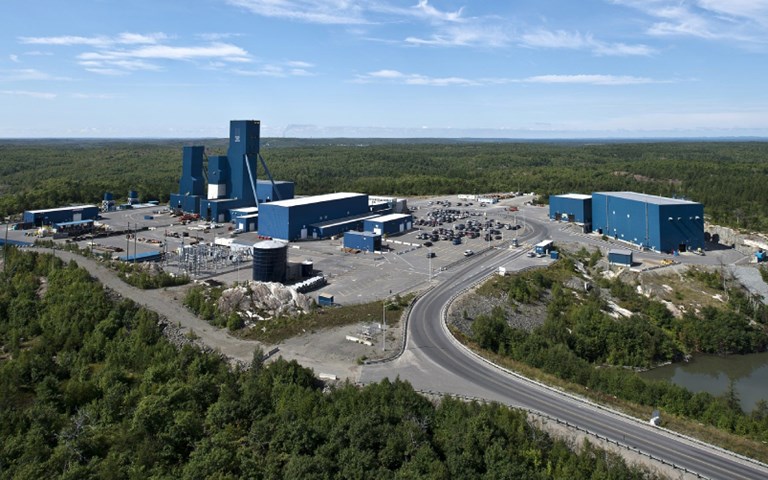Glencore Canada’s Nickel Rim South mine, part of its Sudbury Integrated Nickel Operations. The federal Rural and Northern Immigration Pilot aims to bring skilled foreign workers to communities like Sudbury that are experiencing labour shortages. Courtesy of Glencore Canada.
Highly educated newcomers to Canada with transferable skills beneficial to mining employers still face multiple barriers to entering the workforce and require support with integration, according to a Jan. 25 webinar hosted by the CIM Diversity and Inclusion Advisory Committee.
Panelists from the Mining Industry Human Resources Council (MiHR) and the Immigrant Employment Council of B.C. provided an overview of the supports available to employers that could help boost employment of newcomers and help with the industry’s labour shortage.
Immigrant representation in mining
The MiHR panelists drew from a new report from their organization called “Support for Newcomer Integration into Canada’s Mining Sector,” which provides an overview of challenges faced by newcomers and outlines the various resources, programs and supports available for employers looking to hire them.
Victoria Burnie, manager of equity, diversity and inclusion at MiHR, said that while the immigrant population in Canada is growing at a faster rate compared to the rest of the population, immigrants are still underrepresented in mining.
Using data compiled from a Statistics Canada labour force survey from January 2007 to September 2023, Burnie said that in 2023, immigrants represented only 13.3 per cent of the workforce in mining, while they represented 31.5 per cent of the workforce across all industries. She added that immigrant representation in all industries has grown in the time period that the data was collected, while in mining it has remained relatively flat.
“Unlike women in mining, where we see some pockets of promise—such as in HR and finance—immigrants are underrepresented across the board when we look at specific occupations,” Burnie said.
As an example, in the professional and physical science category, immigrant representation in all industries is 42 per cent, compared to 23 per cent for mining.
“This means for immigrants that it is a mining industry problem,” she said. “Immigrants are just not choosing mining or mining isn’t choosing immigrants in the job market competition stage.”
Newcomer challenges
Burnie described the multiple barriers that prevent newcomers from entering the workforce in Canada.
“Understanding and adapting to the local workplace culture can be challenging to newcomers,” she said. “For example, different countries might have distinct expectations regarding communication styles and professional norms.”
Additional challenges include building professional networks without local contacts, getting foreign credentials recognized in Canada, and a lack of familiarity with the local job market that can prevent newcomers from understanding job trends in Canada and knowing where to look for job openings.
Furthermore, newcomers may have a limited knowledge of available support services, such as career counselling, mentorship programs and job placement services. They may also be unfamiliar with local hiring practices and resumé formats while job hunting, and once they reach the interview stage, might face discrimination or bias based on race, ethnicity, cultural or linguistic differences.
Finally, newcomers with a limited proficiency in the local language would struggle with everything from job interviews to daily interactions with colleagues once they are in the workplace.
“Overcoming these challenges often requires a combination of cultural adaptation, language enhancement, networking efforts and access to support services,” Burnie said. “Employers and communities can play a crucial role in facilitating the integration of newcomers into the workforce by providing resources and creating inclusive environments.”
Support available to employers
Leslie Woolcott, director of equity, diversity and inclusion at MiHR, said that there is no shortage of resources available to support employers with recruiting and hiring newcomers.
“Part of the problem or challenge relates to understanding this complex of programs and navigating through the different eligibility criteria for both employers and newcomers,” she said. “While a limited number of programs specifically target mining, most are available to the sector and have relevance for the sector.”
One of the examples she pointed to was the Express Entry immigration program, which offers a faster pathway to permanent residence status for immigrants and includes a skilled trades stream. Two other examples are the Atlantic Immigration Program and the Rural and Northern Immigration Pilot, both of which were launched in 2022 and create a path to permanent residence for skilled foreign workers who want to live and work in communities that have a need to attract more workers. Some of the communities eligible for the Rural and Northern Immigration Pilot, for example, are known to be hotbeds of mining activity, including Sudbury, Timmins and Thunder Bay in Ontario.
Patrick MacKenzie, chief executive officer of the Immigrant Employment Council of B.C., said that Immigrant Employment Councils of Canada (IECC) has 12 partner organizations across the country that support employers in recruiting, hiring and retaining immigrants into jobs that make the best use of their skills. Some of the services they offer employers include curated strategies for recruiting immigrant workers, cultural competency training, mentorship programs and initiatives to enhance workplace diversity and inclusion.
“We know that resource industries, extractive industries, are really important to the Canadian economy,” he said. “And it’s an area where more newcomers need to be made aware of the opportunity that’s there.”
MiHR’s report is available on its website at mihr.ca/resources in English and French and the IECC offers employer resources online through iecc.network.




